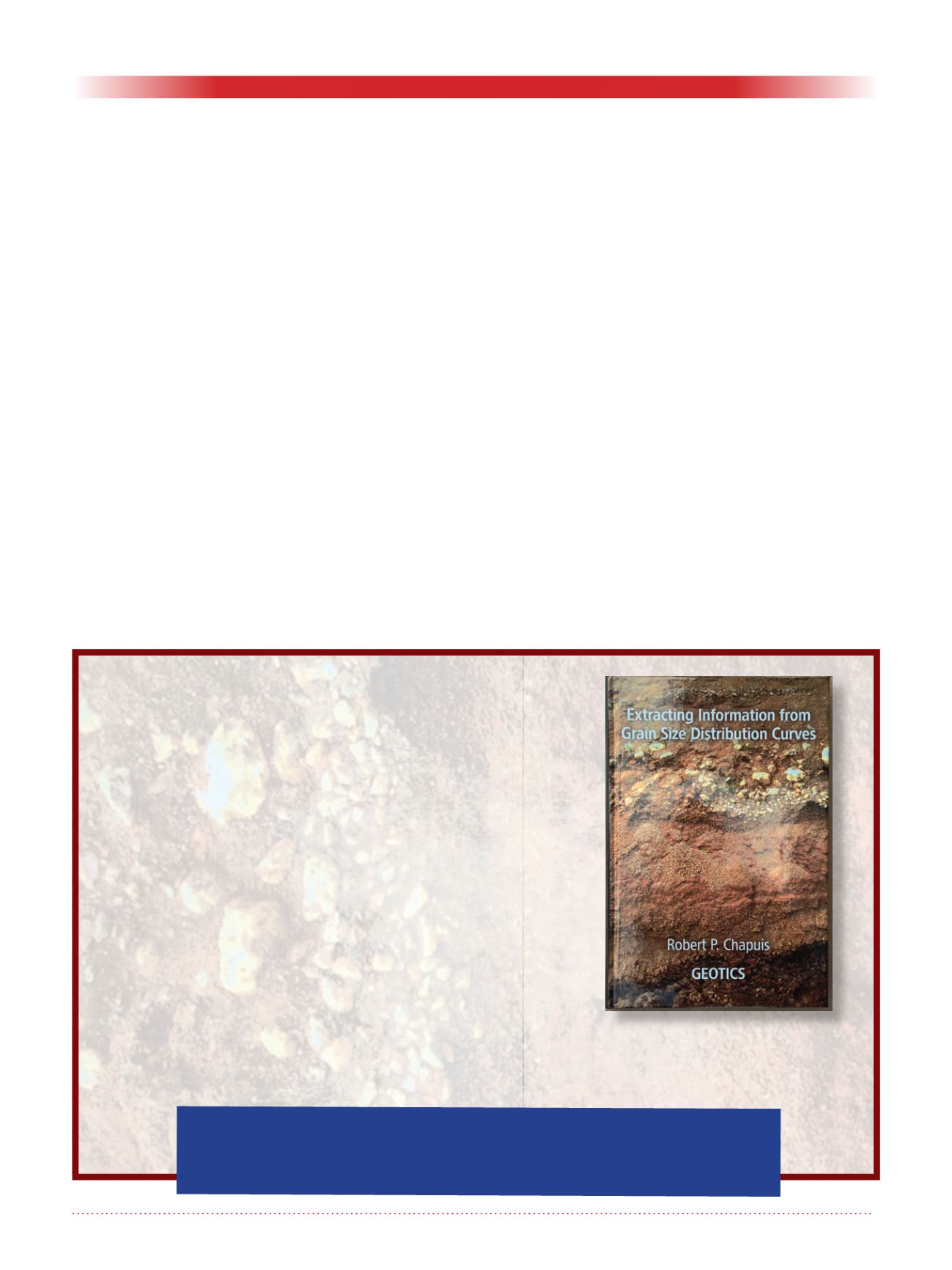
40
Geotechnical News • June 2018
WASTE GEOTECHNICS
Conclusions
The settling, self-weight consolida-
tion and desiccation of tailings can be
monitored in an instrumented column,
under both laboratory simulated desic-
cation and exposure to the weather.
Under laboratory simulated desic-
cation, the sand tailings and slimes
tested became dry to 30 cm and 13 cm
depth, respectively, and experienced
some desaturation to 70 cm and 60 cm
depth, respectively. However, the
slimes lost about twice as much water
and shrunk about twice as much as the
sand tailings, increasing the dry den-
sity of the desaturated upper slimes to
2.25 t/m
3
, compared with an increase
to only 1.67 t/m
3
for the sand tailings.
Under exposure to the weather, the
sand tailings and slimes became dry
to 6 cm and 13 cm depth, respectively,
and experienced some desaturation to
only 6 cm, and 60 cm depth, respec-
tively. The desaturated upper sand tail-
ings and that of the slimes increased
in dry density to 2.50 t/m
3
and 2.18 t/
m
3
, respectively. Hence, for the slimes
tested, laboratory simulated desicca-
tion gave similar results to desiccation
on exposure to the weather. However,
exposure to the weather appears to
have sealed off the surface of the sand
tailings, limiting the depth of desicca-
tion to only about 6 cm.
For the slimes tested, desiccation
occurs to a depth of about 60 cm, indi-
cating this as the appropriate deposi-
tion layer thickness to take maximum
advantage of desiccation, and the
time required for desiccation is about
1 month under hot, high evaporation
conditions (with about twice that time
required under laboratory simulated
desiccation). For sand tailings, desic-
cation to only limited depth or extent
will occur, and desiccation will be
relatively ineffective as a means of
dewatering, densifying and strengthen-
ing the sand tailings.
Professor David J Williams
Director, Geotechnical Engineering
Centre
School of Civil Engineering
Level 4, Advanced Engineering
Building, St Lucia Campus
The University of Queensland QLD
4072 Australia
T: +61 7 3365 3642 M: +61 417
193 591 F: +61 7 3354 4599
E:
W
:
geotechnical.civil.uq.edu.au
Available in both soft and hard cover. 197 pages.
Soft cover: $75.00 Hard cover: $90.00
Order from BiTech Publishers Ltd.,
* Essential reading for all consultants involved
in groundwater and environmental issues
Extracting Information from
Grain Size Distribution Curves
by Robert Chapuis
“This book by Robert Chapuis provides new information
and new insights to recent knowledge for predicting K,
the hydraulic conductivity of a soil. . . ”
— from the foreword by International Society of Hydrogeonomy
(ISH) and Robert P Chapuis
“[it] . . . is intended for persons already experienced
in soil mechanics, geotechnical engineering,
groundwater engineering or groundwater science, but
it should also be useful to all consultants involved in groundwater and environmental
issues.”


